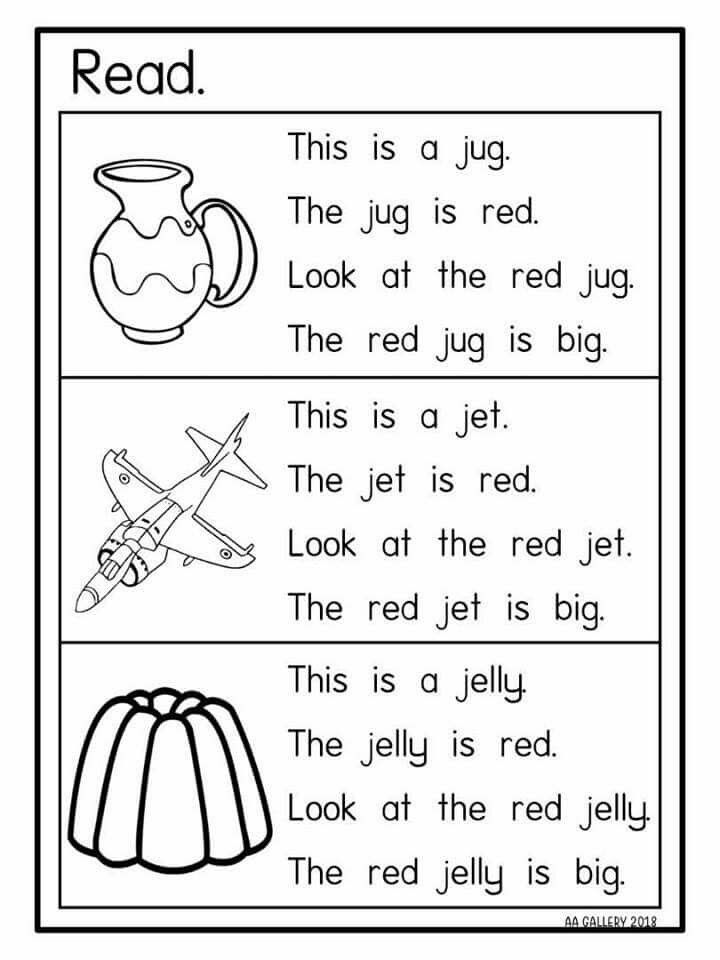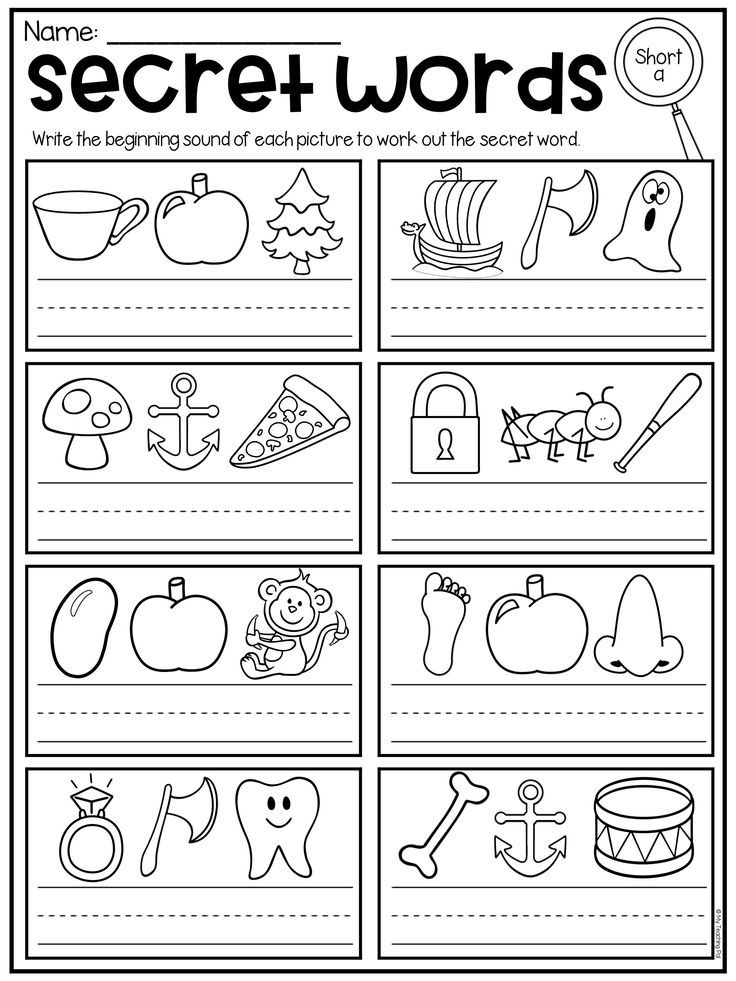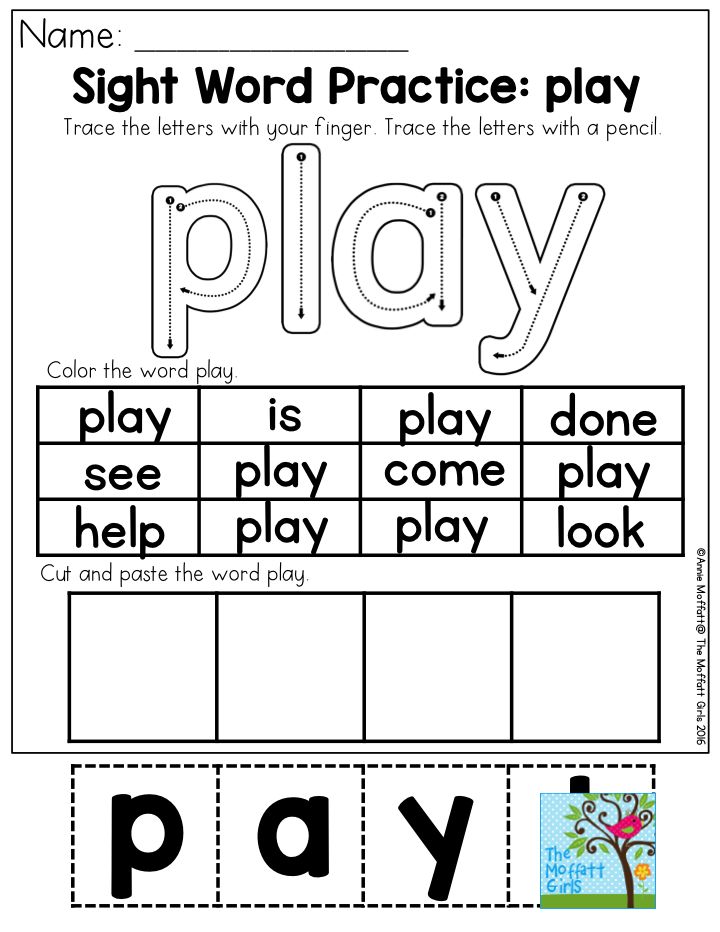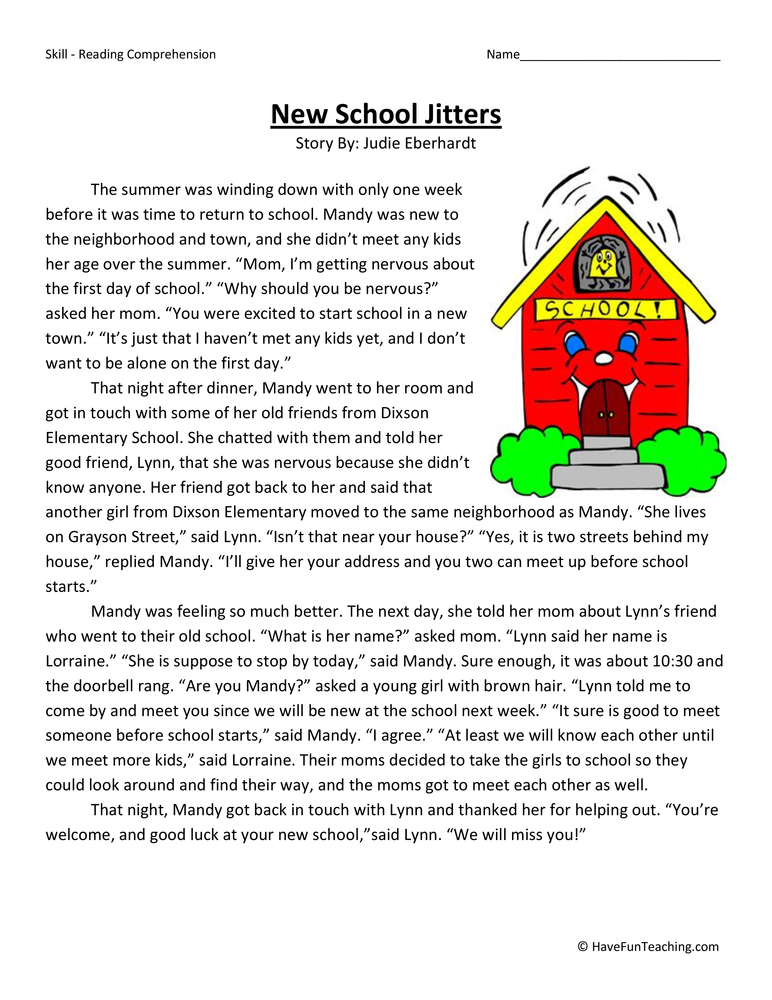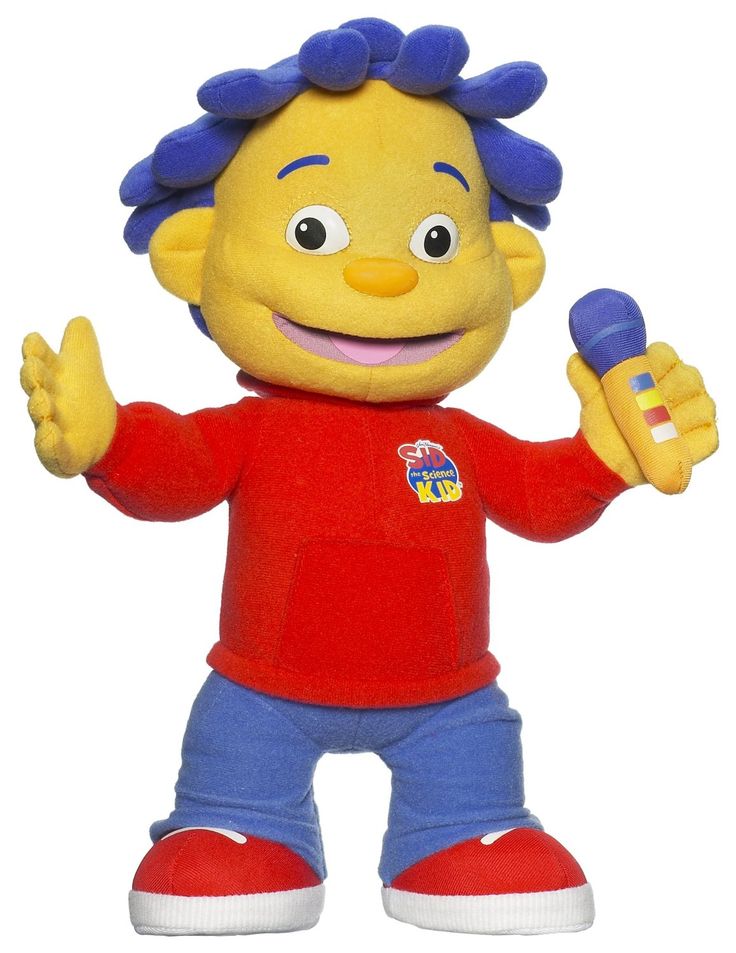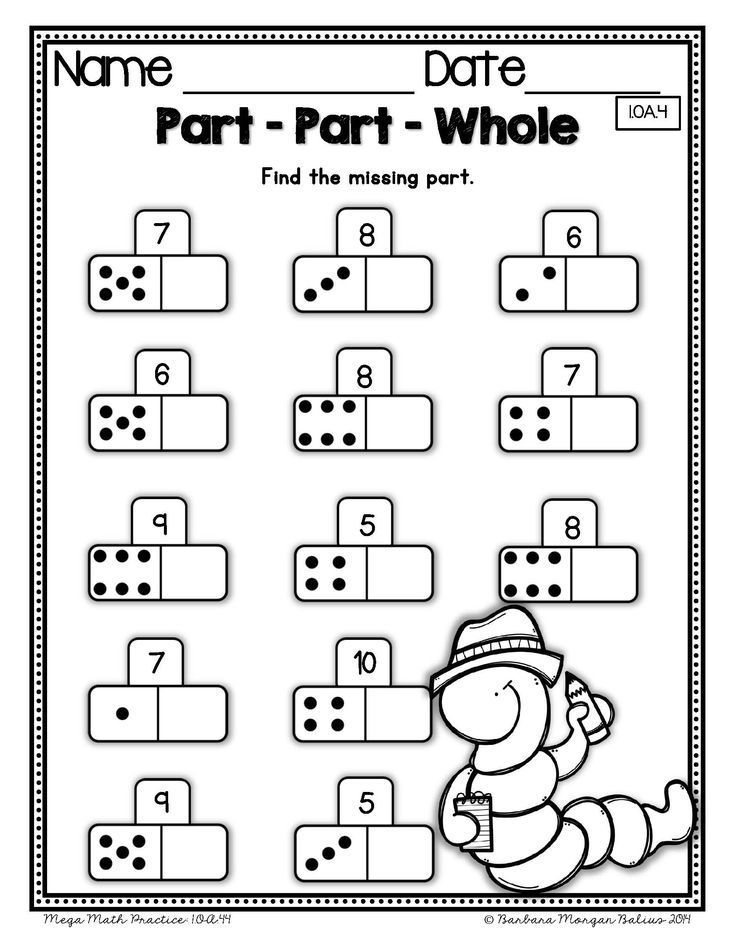Sound symbol correspondence
Letter-Sound Correspondences – The Literacy Brain
The brain has elasticity or the ability to grow new connections and prune unused connections. This is an easier task for younger individuals, when their brain has a greater degree of elasticity. No matter the age growing new or different connections or routes of communication between the different parts of the brain for effective reading is usually very tiring. When a person has dyslexia, this impedes the process.
In his book The Teacher Who Couldn’t Read, John Corcoran (2008) describes living a life similar to a prisoner with no way to escape or get out for good behavior. In his 40s John stumbled upon or was talked into trying a program called, Lindamood Bell. He hesitated because no one else had been able to break through and help him learn the skills necessary to read.
Even though he read at about Grade 2, he had wholes or gaps in the necessary tools he needed to effectively read at Grade 2. He first began meeting with his instructional team at Lindamood Bell for four hours a day, after a week he moved his instruction time to six hours a day. He describes his plunge into intense therapy-training like a soldier readying himself for war. John states, “at times my shirt would be soaking wet as I strained to learn the new techniques. I never worked so hard at anything in my life, and I never felt so good” (Corcoran, 2008, p. 201).
John describes that his journey of learning how to read began with phonemic awareness (oral language), learning how to better manipulate sounds of words. He was lacking the phonemic awareness skills that many educators take for granted as this is usually acquired before students enter formal education. Once those skills were learned, he began learning the names of letters and their corresponding sounds. Instructors assisted John in learning how the movements of his face and mouth helped him to create the sounds of the individual letters, letter diagrams, and words.
He noted that part of his issue was a lack of correct sound linkage. Meaning his brain did not accurately connect the right oral sounds with their corresponding letter(s).![]() He lacked sound discrimination skills that are necessary to distinguish between different sounds associated with each letter. He stated that nearly a third of individuals who possess normal hearing “do not have fully developed auditory conceptual ability” (Corcoran, 2008, p. 204). This skill is necessary for decoding words into the individual sounds and their corresponding letters. He noted that he had to use his senses of hearing, seeing, touching, and moving to accurately absorb the skills necessary to read.
He lacked sound discrimination skills that are necessary to distinguish between different sounds associated with each letter. He stated that nearly a third of individuals who possess normal hearing “do not have fully developed auditory conceptual ability” (Corcoran, 2008, p. 204). This skill is necessary for decoding words into the individual sounds and their corresponding letters. He noted that he had to use his senses of hearing, seeing, touching, and moving to accurately absorb the skills necessary to read.
After about three weeks, he began to feel the prison walls tumble as “the task went from being hard, physical labor to a fun learning activity” (Corcoran, 2008, p. 203). “I felt my own transition from being physically and mentally exhausted to being relaxed and confident” (p. 203). He began to unmask his deception of not knowing how to read, no longer feeling the need to manipulate his environment to protect himself.
After one month of instruction or 100 hours of treatment in the Lindamood-Bell Learning Process, John “gained 10 years in word-attack skill” (Corcoran, 2008, p.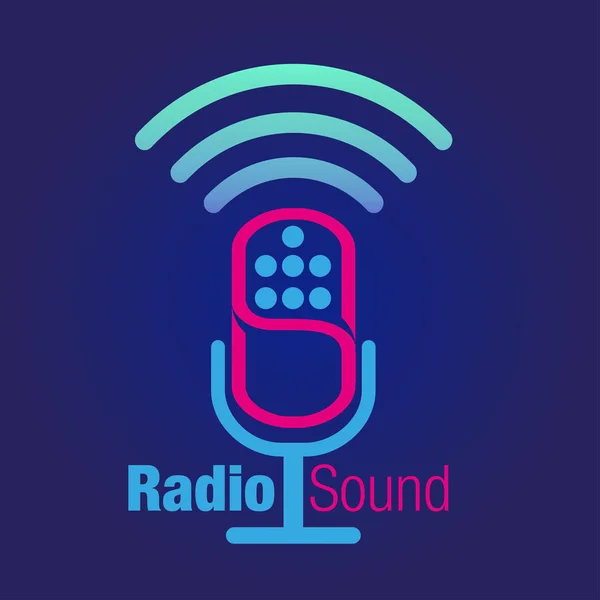 206) moving from Grade 2 to Grade 12; “three years in word recognition” (p. 206) moving from Grade 5 to Grade 8; and “a year and a half in spelling” (p. 206). His therapy also increased his ability to follow oral directions and his reading comprehension skills.
206) moving from Grade 2 to Grade 12; “three years in word recognition” (p. 206) moving from Grade 5 to Grade 8; and “a year and a half in spelling” (p. 206). His therapy also increased his ability to follow oral directions and his reading comprehension skills.
The Lindamood Bell Program was developed in the late 1960’s to teach students with unreliable auditory perceptions known as Auditory Discrimination in Depth (ADD). The program teaches “students to perceive sounds in isolation and in context and how to produce them” (American Federation of Teachers, 1999). They have other programs such as Lindamood Phonemic Sequencing Program (LiPS), which focuses on reading and spelling. “Combining phonics with auditory discrimination in depth (LIPS) program is what I will call the Complete Intensive Systematic Phonics Learning System” (Corcoran, 2008, p. 209).
Each student is unique having different genetic and environmental factors that may affect students’ ability to learn how to read, making accurate diagnose of individual student learning needs a challenge.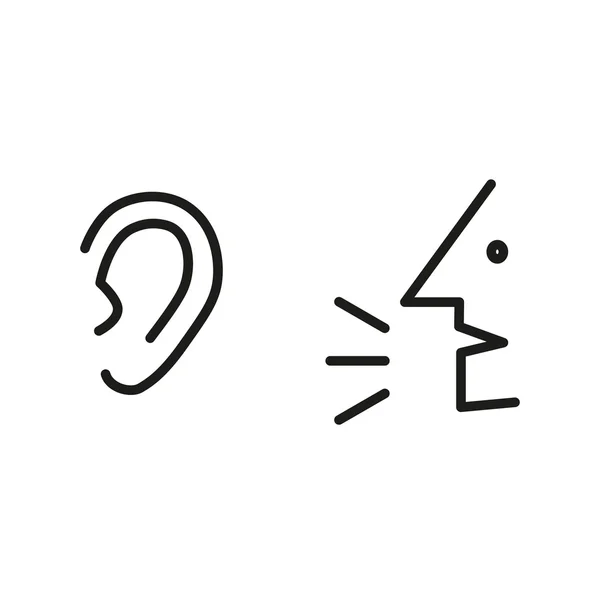
Identifying dyslexic or literacy deficit students during grades Pre-Kinder – 2, when an individual’s brain in more flexible, decreases the dollars to educate and rehabilitate individuals during their teens and adulthood. Identifying them can be tricky! Many states have passed laws making dyslexia a learning disability and many districts have now adopted the necessary assessments to diagnose these students. The International Dyslexia Association (IDA) defines dyslexia as:
“a specific learning disability that is neurobiological in origin. It is characterized by difficulties with accurate and/or fluent word recognition and by poor spelling and decoding abilities. These difficulties typically result from a deficit in the phonological component of language that is often unexpected in relation to other cognitive abilities and the provision of effective classroom instruction. Secondary consequences may include problems in reading comprehension and reduced reading experience that can impede growth of vocabulary and background knowledge” (Adopted by the IDA Board of Directors, Nov.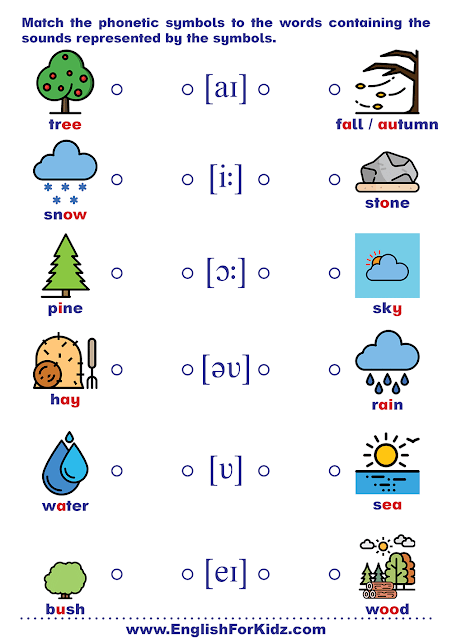 12, 2002).
12, 2002).
Classic dyslexia or developmental dyslexia is acquired through one’s genetics. These students are usually identified though their lack of phonological process skills. They rely on different parts of the brain to process written words. These students work twice as hard to process written words. This type of dyslexia was first discussed in research during the 1800s. Another type is dyscalculia, which affects an individual’s ability to effectively process math equations. Another type of dyslexia is dysgraphia—a student’s ability to learn how to process information into written language. There are programs outside of public education that can effectively diagnose and treat individuals of dyslexia. I encourage individuals to choose programs that are Orton-Gillingham based and endorsed by IDA.
“A good builder, like a good teacher, uses the best tools and material available, which includes a plan and blueprint” (Corcoran, 2008, p. 210).
References
Corcoran, J.![]() (2008). The teacher who couldn’t read. Kaplan, Inc.American Federation of Teachers (1999). Lindamood-bell reading intervention program. Reading Rockets. https://www.readingrockets.org/article/ lindamood-bell-reading-intervention-program
(2008). The teacher who couldn’t read. Kaplan, Inc.American Federation of Teachers (1999). Lindamood-bell reading intervention program. Reading Rockets. https://www.readingrockets.org/article/ lindamood-bell-reading-intervention-program
Learning the names and sounds of letters is one of the first steps in reading acquisition. Students often struggle with learning the letters of similar shapes before age four (Thompson, 2009; Molfese et al.![]() , 2006). Older students learn and recall letter names and sounds at a higher rate than younger students; older students often have higher cognitive skills. Thompson noted that students typically learn upper case letters before learning lower case letters because the letters classified as having “cross-case visual dissimilarity” are easier for younger students to learn (p. 58). Eight letters are classified as having this cross-case dissimilarity: Aa, Bb, Dd, Ee, Gg, Hh, Nn, and Rr. Learning the corresponding sounds to the letters can also be a challenge. Several studies have found that letter knowledge is related to a student’s phonological skills and cognitive abilities (Molfese et al., 2008; Leppänen, Aunola, Niemi, & Nurmi, 2008; Thompson, 2009). The higher a child’s cognitive processing skills are the higher his rate of letter acquisition. Leppänen et al. and Molfese et al. argued, respectively, that letter knowledge at the end of kindergarten is the best predictor of language skills in grade 4 and in grade 6.
, 2006). Older students learn and recall letter names and sounds at a higher rate than younger students; older students often have higher cognitive skills. Thompson noted that students typically learn upper case letters before learning lower case letters because the letters classified as having “cross-case visual dissimilarity” are easier for younger students to learn (p. 58). Eight letters are classified as having this cross-case dissimilarity: Aa, Bb, Dd, Ee, Gg, Hh, Nn, and Rr. Learning the corresponding sounds to the letters can also be a challenge. Several studies have found that letter knowledge is related to a student’s phonological skills and cognitive abilities (Molfese et al., 2008; Leppänen, Aunola, Niemi, & Nurmi, 2008; Thompson, 2009). The higher a child’s cognitive processing skills are the higher his rate of letter acquisition. Leppänen et al. and Molfese et al. argued, respectively, that letter knowledge at the end of kindergarten is the best predictor of language skills in grade 4 and in grade 6.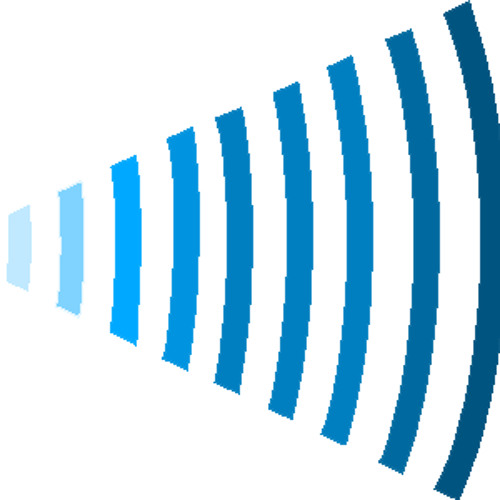
Letter knowledge also involves the idea that each letter has one corresponding sound; some letters have up to three corresponding sounds. The letter sounds also change when the letters are combined with other letters to form words. The letter sounds and rules of letter sounds are part of phonological awareness, which includes a student’s ability to process letter sounds, rhyming words, and segmenting letters within words (Molfese et al., 2006). Phonological awareness is part of the dual route cognitive processing that changes letters into words. Phonological awareness level affects the ability of students to retain individual letter knowledge. Students who demonstrate low phonological awareness skills often need intervention to stay at grade level. However, these phonological awareness skills play a smaller part in reading as students get older. The transition begins
Socio-economic status (SES) can also impact letter knowledge skills for children. For example, children of low SES are usually at a disadvantage when they begin their formal education because they typically have had less exposure to written and spoken words.![]() Parents of low SES are also less likely to have written material in their homes, and they are less likely to read to their children. Parents of low SES children typically have less formal education than parents of higher SES children. High phonological awareness skills will void the effects of lower SES (Nobel, Farah, & McCandliss, 2006).
Parents of low SES are also less likely to have written material in their homes, and they are less likely to read to their children. Parents of low SES children typically have less formal education than parents of higher SES children. High phonological awareness skills will void the effects of lower SES (Nobel, Farah, & McCandliss, 2006).
Phonological awareness skills are more important during the early years of education when children are learning to read (Vaessen & Blomert, 2009). Earlier language skills often predict later phonological awareness skills (Peterson, Pennington, Shriberg, & Boada, 2009). The phonological processing skills of students also determine their rate of letter identification (Molfese et al., 2006). The reliance of students on phonological awareness skills often declines as their cognition develops, and proficient readers use their memory rather than the assistance of phonological awareness skills to decode written words.
Phonological awareness includes ability to process letter sounds, rhyming words, and segmenting letters within words (Molfese et al. , 2006). Phonological awareness is a key cognitive function in learning how to read. Students use phonological awareness skills to process pseudo words or non-words, and they provide the rules and sounds of letters to sound out these words. Phonological awareness skills are often used for initially processing letters into words that are coded into memory for future use in reading fluency and reading comprehension. Students’ level of phonological awareness is often used as a predictor for later reading skills. High phonological awareness skills frequently void the effects of lower socioeconomic status (Nobel, Farah, & McCandliss, 2006). Low phonological awareness can also lead to diagnoses of developmental phonological dyslexia.
, 2006). Phonological awareness is a key cognitive function in learning how to read. Students use phonological awareness skills to process pseudo words or non-words, and they provide the rules and sounds of letters to sound out these words. Phonological awareness skills are often used for initially processing letters into words that are coded into memory for future use in reading fluency and reading comprehension. Students’ level of phonological awareness is often used as a predictor for later reading skills. High phonological awareness skills frequently void the effects of lower socioeconomic status (Nobel, Farah, & McCandliss, 2006). Low phonological awareness can also lead to diagnoses of developmental phonological dyslexia.
References
Leppänen, U., Aunola, K., Niemi, P., & Nurmi, J. (2008). Letter knowledge predicts grade 4 reading fluency and reading comprehension. Learning and Instruction, 18, 548-564.
Molfese, V., Modglin, A., Beswick, J., Neamon, J.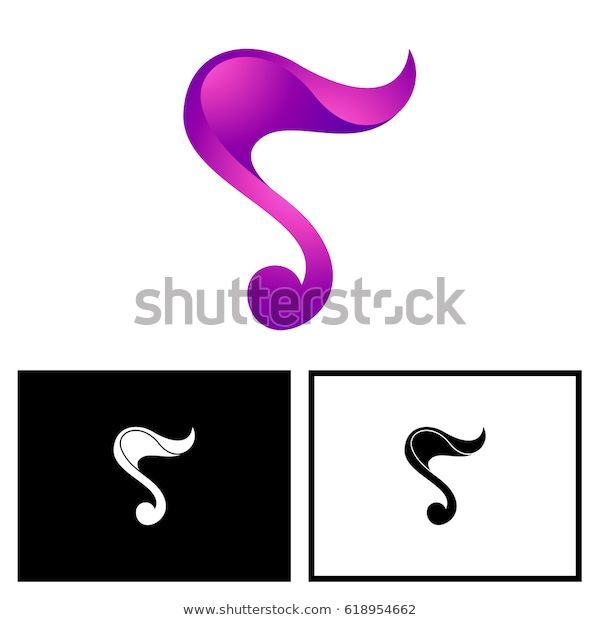 , Berg, S., Berg, C., & Mohar, A. (2006). Letter knowledge, phonological processing, and print knowledge: Skill development in nonreading preschool children. Journal of Learning Disabilities, 39(4), 296-305.
, Berg, S., Berg, C., & Mohar, A. (2006). Letter knowledge, phonological processing, and print knowledge: Skill development in nonreading preschool children. Journal of Learning Disabilities, 39(4), 296-305.
Noble, K., Farah, M. & McCandliss, B. (2006). Socioeconomic background modulates cognition-achievement relationships in reading. Cognitive Development, 21(3), 349-368.
Peterson, R., Pennington, B., Shriberg, L, & Boada, R. (2009). What influences literacy outcome in children with speech sound disorder? Journal of Speech, Language, and Hearing Research, 52, 1175-1188.
Thompson, G. (2009). The long learning route to abstract letter units. Cognitive Neuropsychology, 26(1), 50-69.
Vaessen, A, & Blomert, L. (2009). Long-term cognitive dynamics of fluent reading development. Journal of Experimental Child Psychology, 105, 213-231.
Author Jennifer S. Ray, PhD, C-SLTPosted on Categories Diagnosing Dyslexia, Foundations of Reading, Letter-Sound Correspondences, Traits of DyslexiaTags diagnosing dyslexia, letter knowledge, Phonological awareness
Our brain is not prewired to read, so we must “train” our brain through instruction and practice.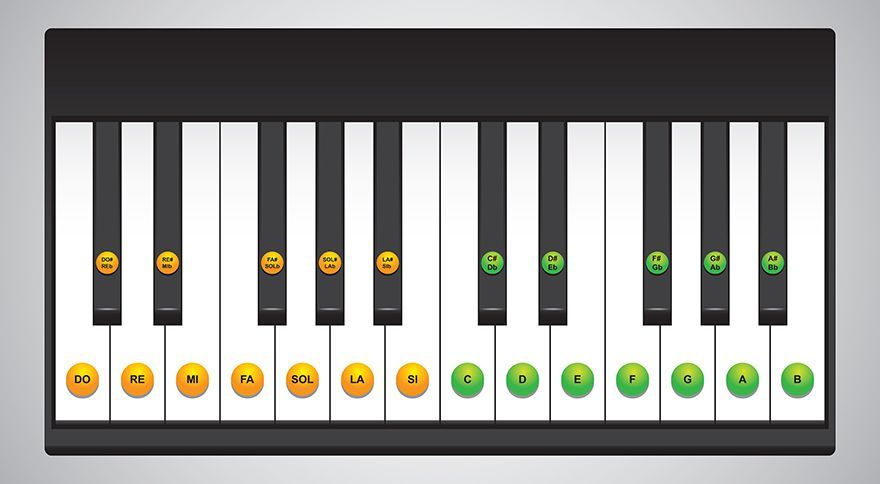 This will develop the connections necessary to process and read printed words. But reading the words is not enough, as one must have meaning attached to the words to comprehend what the words mean. The comprehension component of reading begins at birth, when a person begins to attach sounds to meaning. Learning how to read the symbols or words begins when a person attaches pictures to sounds. Some will learn the name of each individual alphabet letter by accident, most will need to be explicitly taught what each letter is called. This can be tricky as some letters can stand for several different sounds and the sounds of the individual letter can change when they are combined with other letters. Individuals begin learning about letters, letter sounds, and the sounds of combining letters into words as they learn how to speak or communicate orally. This is called phonemic awareness.
This will develop the connections necessary to process and read printed words. But reading the words is not enough, as one must have meaning attached to the words to comprehend what the words mean. The comprehension component of reading begins at birth, when a person begins to attach sounds to meaning. Learning how to read the symbols or words begins when a person attaches pictures to sounds. Some will learn the name of each individual alphabet letter by accident, most will need to be explicitly taught what each letter is called. This can be tricky as some letters can stand for several different sounds and the sounds of the individual letter can change when they are combined with other letters. Individuals begin learning about letters, letter sounds, and the sounds of combining letters into words as they learn how to speak or communicate orally. This is called phonemic awareness.
Students are typically taught one letter and one sound at a time, before adding or talking about the other sounds an alphabet letter may make.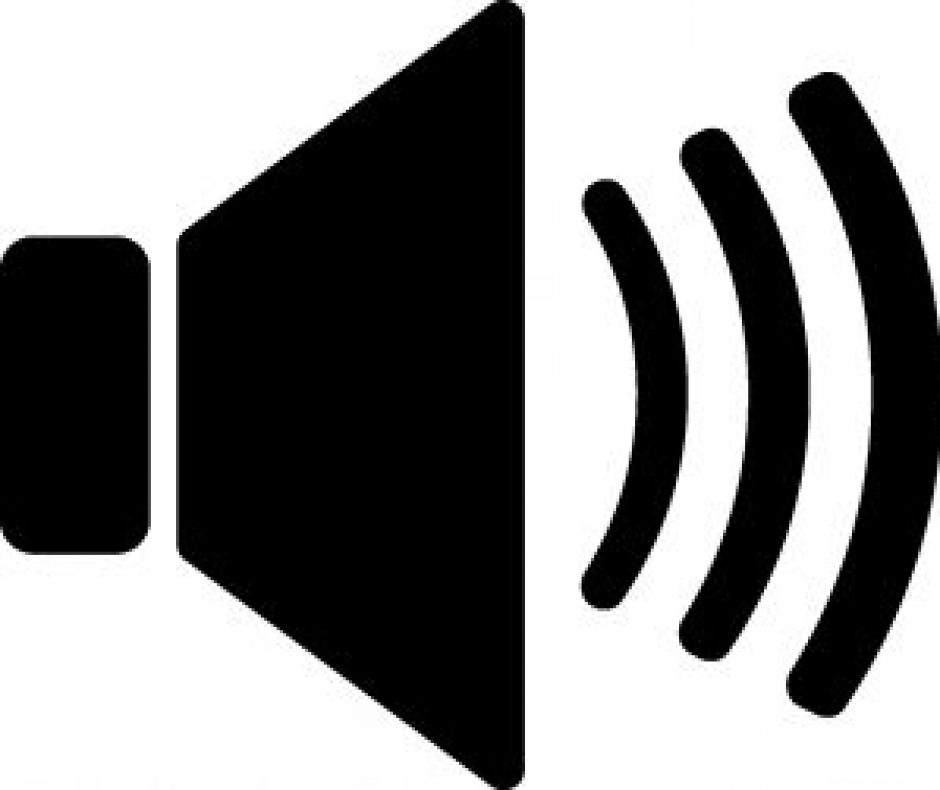 This may seem laborious for some, but very necessary to build an adequate, firm foundation in which to develop fluent reading and comprehension of the written words. Letter-sound correspondence taught using action or movement can lessen the strain. Students should see the letter in print as they are saying the sound. It is also helpful for students to write the letters as they say the letter’s sound. There are programs or video clips that can be used to reinforce and practice letter-sound correspondences. Learning letter-sound correspondences increases students’ ability to decode and encode written words based on the individual sounds of a word.
This may seem laborious for some, but very necessary to build an adequate, firm foundation in which to develop fluent reading and comprehension of the written words. Letter-sound correspondence taught using action or movement can lessen the strain. Students should see the letter in print as they are saying the sound. It is also helpful for students to write the letters as they say the letter’s sound. There are programs or video clips that can be used to reinforce and practice letter-sound correspondences. Learning letter-sound correspondences increases students’ ability to decode and encode written words based on the individual sounds of a word.
Students who are dyslexic will often take longer to learn letter-sound correspondences as their brains are initially wired differently. Their brain connections typically develop differently from most individuals. This is also why some dyslexic individuals tend to be labeled as dumb, lazy, etc. A dyslexic brain works overtime to develop new connections between the different parts of brain necessary to process written words into meaning.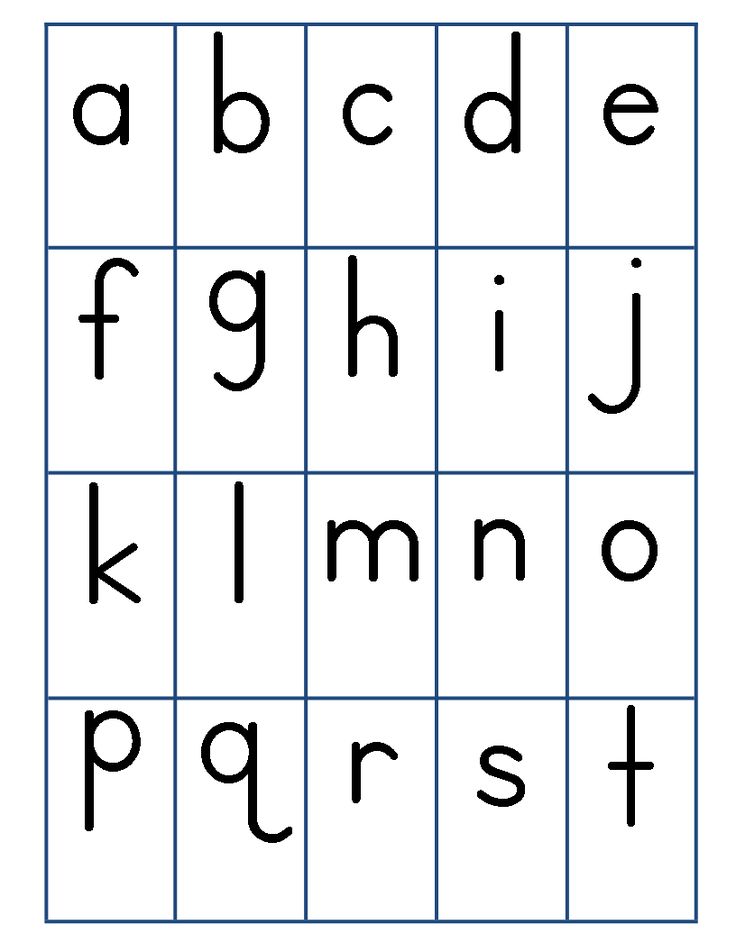 This often makes students tired or overwhelmed. Students need a safe learning environment to explore the relationships of sounds and letters, without ridicule, as they develop efficient reading highways in their brain.
This often makes students tired or overwhelmed. Students need a safe learning environment to explore the relationships of sounds and letters, without ridicule, as they develop efficient reading highways in their brain.
The University of Oregon (2009) wrote and published an article at reading.uoregon.edu that discusses the concepts and research of alphabetic principle and its components. The article defines alphabetic principle as two parts, alphabetic understanding and phonological recoding. Alphabetic understanding or sound-letter correspondences is the second pillar of structured literacy, which I defined in an earlier blog as the knowing of the relationship(s) between phoneme(s) and grapheme(s). This knowledge gives students a tool to allow them to be self-starters, to begin sounding out (decoding) and spelling (encoding) words on their own. Learning to read is a very complex, interdependent process that takes time and practice.
Author Jennifer S. Ray, PhD, C-SLTPosted on Categories Comprehension, Dyslexia, Foundations of Reading, language development, Letter-Sound Correspondences, Oral Language, Reading Brain Connections, Structure Literacy Teacher, Traits of DyslexiaTags dyslexia, letter-sound correspondences, reading brain development For me, a joy of teaching is watching a student realize that they have the power (the tools) to analyze and decode words into the correct sounds.![]() This skill can be easy for some students to master, most will need instruction. The type and intensity of instruction will differ for each student. I suggest that all instruction should include practice in naming the letter and its sound(s). This practice should happen each day. Using cards that include picture(s) of an item that begins with the sound of the letter will increase the retention of the sound-symbol correspondences. There are other instructional strategies that can be used in addition to flashcards. Some of these instructional strategies are discussed in the following paragraph.
This skill can be easy for some students to master, most will need instruction. The type and intensity of instruction will differ for each student. I suggest that all instruction should include practice in naming the letter and its sound(s). This practice should happen each day. Using cards that include picture(s) of an item that begins with the sound of the letter will increase the retention of the sound-symbol correspondences. There are other instructional strategies that can be used in addition to flashcards. Some of these instructional strategies are discussed in the following paragraph.
The following strategies include three of more of the five senses—hearing, touching, seeing, tasting, and smelling. The first strategy is to match cards of letters with cards that feature pictures of items that begin with the same sound as the letter. There should be pictures that represent all of the sounds that a letter can make, for example G…. /g/ /j/ or E…. /e/ /E/. Students says the letter and the beginning sound of the featured item when they the matched cards.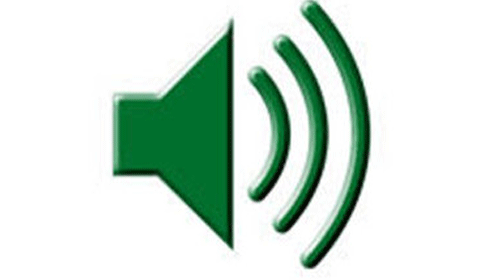 The second strategy is using a white board and marker. Students write the letter, then say the sound. Or the teacher says the sound the student writes the letter. The third strategy is using sand. Colored maybe a better choice as this usually gives a better contrast and students tend to like color. Pour just enough sand to give about a fourth of an inch layer on a plate, on a table or on deep cookie sheet type container. Students write a letter in the sand and say the sound(s) of the letter. Or the teacher says the sound of the letter the student writes the letter. The fourth strategy is using pudding. This can be used in the same manner as the sand. This is a different texture. The fifth strategy is using play dough. Students use the play dough to form a letter(s). Students point to the formed letter and say its sound(s). The teacher can ask students to form letters by uttering its corresponding sound. Students can use pictures of the letter to help them form the letter. The sixth strategy is using music.
The second strategy is using a white board and marker. Students write the letter, then say the sound. Or the teacher says the sound the student writes the letter. The third strategy is using sand. Colored maybe a better choice as this usually gives a better contrast and students tend to like color. Pour just enough sand to give about a fourth of an inch layer on a plate, on a table or on deep cookie sheet type container. Students write a letter in the sand and say the sound(s) of the letter. Or the teacher says the sound of the letter the student writes the letter. The fourth strategy is using pudding. This can be used in the same manner as the sand. This is a different texture. The fifth strategy is using play dough. Students use the play dough to form a letter(s). Students point to the formed letter and say its sound(s). The teacher can ask students to form letters by uttering its corresponding sound. Students can use pictures of the letter to help them form the letter. The sixth strategy is using music. Using video that includes sound that students can sing-a-long with or mimic increases the number of senses that students use. Using video that includes motions, along with music and pictures can increase the retention of letter and sound correspondences. The last strategy that I will included in this blog is using a grate (usually plastic). The grate is usually about the size of a piece of paper. The texture should be defined enough that when you place a piece of paper over it you can run a crayon over it to create a picture of the grate. The grate can be used in a few ways. Students trace the letter with their index finger, while saying its sound. Students place a piece of paper on the grate and write a letter using a crayon. Students then say the letters’ corresponding sound(s).
Sound-symbol correspondences or the relationship(s) between phoneme(s) and grapheme(s) are Pillar 2 of Structure Literacy Instruction. This may be referred to as phonics instruction that teaches predictable or the constant rules of sound-symbol correspondences to produce written language. At this stage students learn one-on-one correspondence, for example the written letter B represents this phoneme or sound. It is important to note that some letters are represented by more than one sound, depending on the origin and spelling of the word. Students begin decoding and encoding words as they begin to learn the sound-symbol correspondences. Student knowledge of the phoneme(s) and grapheme(s) relationships usually increases student ability to read, comprehend, and spell written language.
Structure Literacy Teacher (SLT) is a fairly new label, developed by the International Dyslexia Association (IDA), to describe the most effective form of instruction for students identified dyslexic. This type of instruction is also effective for English Second Language (ESL) learners and for other students at-risk for literacy acquisition (Baker et al., 2014; Gersten et al., 2009). Structured literacy instruction should include following instructional principles:
- systematic instruction, taught in logical order—builds upon prior knowledge
- students should learn the foundational or prerequisite skills of the current lesson
- explicit instruction, direct—clearly explained and teacher modeled
- scaffolded instruction to match student abilities, providing exact temporary support
- interactive discussions about the “new” task
- multiple opportunities to practice the new task or skill
- monitoring of student achievement through observation, interaction, and formal assessment
Structured literacy instruction includes six pillars or parts of literacy development—oral and written. Structured literacy instruction should begin with Pillar 1, as each is dependent on the previous pillar(s).
Pillar 1 is phonology, the study of spoken sounds (phonemes)—rules of how sounds are encoded, such as why these sounds follow this pattern to form this sound(s). Individuals should have phoneme awareness skills before learning how to read. This is the ability to hear, identify, and manipulated individuals sounds in spoken words. Phoneme awareness is part of phonological awareness. Phonological awareness is the ability to process and manipulate letter sounds, rhyming words, and segmenting of sounds within words. The study of phonology usually increases student ability to spell, pronounce, and comprehend written words.
Pillar 2 is sound-symbol correspondences or the relationship(s) between phoneme(s) and grapheme(s). This may be referred to as phonics instruction that teaches predictable or the constant rules of sound-symbol correspondences to produce written language. At this stage students learn one-on-one correspondence, for example the written letter B represents this phoneme or sound. It is important to note that some letters are represented by more than one sound, depending on the origin and spelling of the word. Students begin decoding and encoding words as they begin to learn the sound-symbol correspondences. Student knowledge of the phoneme(s) and grapheme(s) relationships usually increases student ability to read, comprehend, and spell written language.
Pillar 3 is syllable knowledge, the understanding of the different types of syllables. Syllable knowledge increases the accuracy of language pronunciation and comprehension. Syllable knowledge also increases student decoding and encoding skills. The English language has six major types of syllables that are described in the following chart.
| Type of syllable | Example |
| CVC | cat, log, bit, set, cut |
| Final e | kite, bone, bake, cute |
| Open | me, sky, be/gan, mu/sic, fe/ver |
| Vowel Diagraph | oi-soil, oil; ee-sleep, keep; ea-beat, leak; oa-boat, road; oo-zoom, smooth |
| r-controlled | ar-car, start; ir-girl, swirl; er-her, flower; ur-fur, burn; or-fork, corn |
| Constant-le | marble, puddle, bugle, maple, little |
Pillar 5 of structured literacy instruction is syntax or the study of sentence structure. The principles that dictate the sequence and function of words in a sentence. These principles are also referred to as the mechanics, grammar, and variation of a sentence. Pillar 4 is morphology that is the study of the smallest units of meaning or morphemes. Morphology focuses on how parts of meaning fit together to form words and new meaning. Word analysis helps students to learn the meaning(s) of morphemes and how the word parts conclude its meaning. Word analysis also increases student background knowledge, which increases student ability to comprehend written passages.
The more common parts of a sentence.
| Parts of a sentence | Definition | Examples |
| Verb | describes the action | bark, ran, call, like |
| Adverb | modifies a verb, helps to clarify or further define a verb | warmly, quiet, loudly, today, outside |
| Noun | person, place or thing | house, dog, car, book |
| Adjective | modifies a noun, adjusts the meaning or further defines the noun to clarify meaning | beautiful, dark, old |
| Article | determiners, modifies and precedes a noun | a, an, the |
| Preposition | usually precedes a noun and in relation to another word in the clause | at, in, on, with, for, about, of, after |
| Conjunction | connecting words, they connect clauses and sentences | and, but, if |
Pillar 6 of structured literacy is semantics or study of the meaning of words, symbols, and units of words. A person’s lexicon stores the meaning of words, symbols, and units of words—vocabulary. People begin to develop their lexicon at birth. Individuals attach meaning to tones of sound. These meanings are adjusted as individuals are introduced to new tones or meanings. Individuals transfer the meaning of tones (voice) to symbols (print) as they learn how to read and write. To better understand words and groups of words teachers often use concept maps to examine the definition of a word. Students identify the related synonyms and antonyms of the word. Students often identify or attach pictures to a word or groups of words. Semantics assist in attaching inferred meaning to written and oral verbiage. Semantics can include morphology.
You can find details about becoming a certified Structured Literacy Teacher on the IDA website.
References
Baker, S., Lesaux, N., Jayanthi, M., Dimino, J., Proctor, C.P., Morris, J., Gersten, R., Haymond, K., Kieffer, M.J., Linan-Thompson, S. , & Newman-Gonchar, R. (2014). Teaching academic content and literacy to English learners in elementary and middle school (NCEE 2014-4012). Washington, DC: National Center for Education Evaluation and Regional Assistance (NCEE), Institute of education Sciences, U.S. Department of Education. Retrieved from http://ies.ed.gov/ncee/wwc/publications_reviews.aspx.
Gersten, R., Compton, D., Connor, C.M., Dimino, J., Santoro, L., Linan-Thompson, S., & Tilly, W.D. (2009). Assisting students struggling with reading: Response to intervention and multi-tier intervention for reading in the primary grades, a practice guide (NCEE 2009-4045). Washington, DC: National Center for Education Evaluation and Regional Assistance (NCEE), Institute of education Sciences, U.S. Department of Education. Retrieved from http://ies.ed.gov/ncee/wwc/publications/practiceguides/.
Author Jennifer S. Ray, PhD, C-SLTPosted on Categories Dyslexia, English Second Language (ESL), Foundations of Reading, Letter-Sound Correspondences, literacy instruction, Morphology, Oral Language, Phonological Awareness, Reading Intervention, Structure Literacy Instruction, Structure Literacy Teacher, Syllable KnowledgeTags dyslexia, ESL, intervention, structure literacy instruction, syntax
Structured literacy instruction includes six pillars or parts of language development-oral and written. Structured literacy instruction is taught explicitly and systematically, beginning with Pillar 1. Structured literacy may be used to teach literacy at all levels of instruction, such as Tier 1-general classroom, Tier 2-intervention usually taught in small groups, Tier 3-intervention usually taught in one-on-one group setting, or special education. The number of levels for instruction in a RTI model may be different for each school, depending on the learning needs of the current students and the available resources.
Pillar 1 is phonology, the study of spoken sounds (phonemes)—rules of how sounds are encoded, such as why these sounds follow this pattern to form this sound(s). Individuals should have phoneme awareness skills before learning how to read. This is the ability to hear, identify, and manipulated individuals sounds in spoken words. Phoneme awareness is part of phonological awareness. Phonological awareness is the ability to process and manipulate letter sounds, rhyming words, and segmenting of sounds within words. The study of phonology usually increases student ability to spell, pronounce, and comprehend written words.
Pillar 2 is sound-symbol correspondences or the relationship(s) between phoneme(s) and grapheme(s). This may be referred to as phonics instruction that teaches predictable or the constant rules of sound-symbol correspondences to produce written language. At this stage students learn one-on-one correspondence, for example the written letter B represents this phoneme or sound. Students begin decoding and encoding words as they begin to learn the sound-symbol correspondences. Student knowledge of the phoneme(s) and grapheme(s) relationships usually increases student ability to read, comprehend, and spell written language.
I will include pillars 3 and 4 of structured literacy instruction in my next post.
References
Birsh, J.R. (2011). Multisensory teaching of basic language skills. Baltimore: Paul H. Brookes Pub Co.
Henry, Marcia K. (2010). Unlocking literacy effective decoding and spelling instruction. Baltimore: Paul H. Brookes Pub Co.
International Dyslexia Association, dyslexiaida.org/what-is-structured-literacy/
Moats, L. (2000). Speech to print. Baltimore: Paul H. Brookes Pub Co.
Author Jennifer S. Ray, PhD, C-SLTPosted on Categories Instructional Models, language development, Letter-Sound Correspondences, literacy instruction, Oral Language, Phonological Awareness, Response to Intervention (RTI), Structure Literacy InstructionTags dyslexia, language development, reading instructionTranslating written language into meaning or the process of reading is like completing a dot to dot picture. The brain has to connect the right dots or take the right highways and sideroads to deeply or fully comprehend written language. The complex process of connecting the right dots begins at conception, as brain connections are organized or cataloged through predetermined genetic design. The original or genetic organization can be altered or changed through a child’s environment.
Individuals are not naturally wired with the connections to process letters into usable information. The brain has to develop those connections to process written letters into useable information, which begins at birth through oral language. A child’s verbal communication connections serve as a reference for the process of developing written processing connections. Some children can more easily develop the right connections to use written language. Meaning they pick up letter names and their corresponding sounds and are able to build words and their meanings into usage information without purposeful instruction. Most children need planned instruction to learn each letter and the letter’s corresponding sound(s) and how to develop letters into meaningful words. Most children also need planned instruction to break down words into sounds and meaning. And some children will need explicit, systematic instruction to fully digest letters, words, and sentences into useable information. Understanding what type of literacy instruction children need will follow in a future post.
References
International Dyslexia Association Conference; Dr. Louisa Moats, Dr. F. Hoeft, & Dr. K. Pugh
Binet, A. & Simon, T. (1916) The development of intelligence in children. Baltimore: Williams
& Wilkins Co.
Fowler, W. (1983). Potentials of childhood, Vol 1. Lexington, MA: D.C. Health & Co.
Piaget, J. & Inhelder, B. (1966). The psychology of the child. New York, NY: Basic Books.
Vygotsky, L. (1934). Thought and language. Cambridge, MA: MIT Press.
Author Jennifer S. Ray, PhD, C-SLTPosted on Categories Comprehension, Letter-Sound Correspondences, literacy instruction, Reading Brain ConnectionsTags developing brain, dyslexia, reading comprehension
Writing Made Easier: Helping Students Develop Automatic Sound/Symbol Correspondence
By: Regina G. Richards
The process of written expression places the most demands on a student's ability to perform multiple subtests simultaneously. Generally, the writing process can be divided into two very global areas of mechanics and content. The more efficiently and automatically the student uses basic writing mechanics (capitalization, punctuation, spelling, letter form, sentence structure), the easier it will be to focus on the content (the expression and organization of ideas). This article is designed to discuss only one small component of writing mechanics — finesse with sound/symbol correspondence. It describes a method which can be used by a parent with a single child or a teacher with a group.
The more automatically a person is able to put words on paper, the easier it is to focus on ideas. The spelling does not need to be perfectly accurate, but it does need to be close enough to correct for the student to read what he or she has written. The three main aspects needed to spell accurately are:
- Sounds
- phonological awareness
- sound/symbol correspondence
- phonetic analysis skills
- Visual recall
- visual eidetics (automatic visual recognition of word parts and whole words)
- recall of tricky parts
- knowledge of unusual patterns
- Rules
- knowledge of spelling rules, including syllabification, accenting, flexing, and the variety of vowel sounds
These three categories are listed developmentally. Hence, the first area of focus begins with an ability to understand sounds and moves into sound/symbol correspondence. Good sound/symbol correspondence also depends upon an ability to create and form letters automatically and efficiently without having to think about each movement as a separate unit. This article focuses on the development of sound/symbol correspondence, a critical and essential prerequisite within the process of writing.
Efficient and automatic sound/symbol correspondence leads to accurate phonetic analysis and is a vital aspect of the process of learning to read. It depends upon appropriate phonological awareness development and is a critical part of an appropriately balanced approach, supported in many state frameworks. While phonics should not be the sole focus of teaching or result in an overemphasis on the development of skills in isolation, the critical value of phonics cannot be overlooked or left to implicit learning. This is true for all students, most especially the dyslexic and/or dysgraphic learner.
To become skillful readers or writers, children need to learn how to decode words instantly and effortlessly. Automaticity is a major goal. Initially, students must examine the letters and letter patterns of every new word while reading, but as they progress, the process needs to become more automatic.
The most effective phonics instruction is explicit and systematic (California State Board of Education, 1996, p. 6). In explicit phonics the key points and principles are clarified precisely for students. Another important aspect of effective phonics instruction is that it is systematic phonics: it gradually builds from basic elements to more subtle and complex patterns. The purpose is to convey the logic of the system and to invite its extension to new words that children will encounter on their own. The end goal is independence in reading and writing new and unusual words.
These needs were first substantiated by Samuel T. Orton, M.D., and Anna Gillingham, a psychologist, in their initial work on dyslexia in the early 1920's, and subsequently in Gillingham's reading program (Gillingham, 1968). Teaching phonics opportunistically by pointing out sound/symbol connections only as they arise does not have the same impact on learning. While there are some students who will learn to read no matter what is done in the classroom, the dyslexic student or the student with other reading-based learning differences will not learn to read by teaching phonics opportunistically. This concept is critical for teachers to understand, as it can make the difference between a dyslexic student learning or struggling to read.
Building on their foundation of phonological awareness, students must understand how the alphabetical principle works, and they need to understand the concept and use of a code system. After this understanding is entrenched, it is relatively easy for the students to add new sound/symbol pairs to their working knowledge set. This is especially true for dyslexics and is the rationale for the systematic approach as initially represented by Gillingham. Beginning phonics instruction is best conducted with a relatively small set of consonants and short vowels, developing sound/symbol relationships progressively. By using a limited set of letters to build as many familiar words as possible, students become more aware of the code system and learn to use phonics to read and spell logically, an important step towards automaticity.
It has been found very useful with both dyslexic and dysgraphic students to teach sound/symbol correspondence concretely and precisely. This method also works for other learners, but it is essential for learners with special needs.
The following system differs from other systems in that it utilizes a multisensory presentation combined with visual mnemonics. There is a match between auditory, visual, and kinesthetic processing when dealing with sounds and matching them to written letters. Visual pictures are also included, pulling in another whole system: visual imagery. This provides the students with hooks or links to remember a key word for each sound. In addition, the use of phrases, many of which are silly, brings in a contextual hook to help students hang the words together, thus providing another system to aid retrieval of the information.
This system is called Memory Foundations for Reading (MFR) because of its importance in the foundational system for reading and because of its assistance in retrieval memory. The sequence presented in MFR follows the sequence presented in the Gillingham program. There is no magical reason for this sequence, and the sequence may be varied to coordinate with any reading program. What is important is to separate presentation of letters that are similar in visual configurations (such as b and d) and sounds that are similar and difficult to discriminate (such as short e and short i). One sound in the pair should be taught and developed to a level of automaticity before the second sound is introduced. Once the second sound is introduced, substantial discrimination practice needs to be included.
Back to Top
Value of key words in developing automatic sound/symbol associations
Many students learn to form associations between sounds and symbols merely through exposure, drill and practice. Dyslexic students and others who struggle with the reading process benefit substantially by receiving direct instruction and substantial practice to help them form automatic associations between visual, auditory, and kinesthetic modes. This enables them to make specific links and connections between information that is auditory (what they hear), visual (what they see), and kinesthetic (what they say and write). The Gillingham program refers to these multisensory links as the language triangle (see figure 1).
Fig. 1 — The Language Triangle
The basic principle of the language triangle is to build letter sounds into words, like bricks built into a wall. The technique is based upon close association of visual, auditory, and kinesthetic elements(Gillingham, 1968, p. 40).
Presenting separate and isolated key words for each sound/symbol association is effective, but it can also be laborious and tedious. In contrast, presenting key words in an organized approach is effective and efficient and allows students to use a variety of modalities and connections in the learning process.
In MFR, the key word for each sound/symbol relationship is represented by a pictured object. Thus, when reading or spelling, the student can refer to the association to trigger the needed sound. When these associations are made consistently, retrieval is much more automatic. Presenting the key words within a mnemonic sentence provides the memory tool within a contextual hook or connection. The visual images linked to each phrase enhance retrieval and accelerate the learning. When the pictures are colored, additional visual input is provided. By coloring the pictures themselves, students reinforce the connections kinesthetically while learning the associated phrases. The program, Memory Foundations for Reading: Visual Mnemonics for Sound/Symbol Relationships, presents each of the pictures in 8½ x 11 line drawing format to encourage students to color the pictures (Richards, 1997).
Mnemonic strategies are critical for dyslexic learners. A mnemonic is a memory trick, a strategy or plan which provides a hook to hang on to and later retrieve a memory. Key words can be explained to the students as very important helper words: they are like keys to help us learn and remember what sound goes with each letter.
The MFR system of picture mnemonics provides an organizational system for children to remember letter sounds/symbols that is multidimensional: it is divided into three sets.
- Set one involves the main sound for each alphabet letter
- Set two provides letters with multiple sounds
- Set three provides sounds with multiple spellings
There are interconnections between these three sets to help facilitate the memory links. For example, in set 1 goat is the key word for the g sound. In set 2, goat is used again for the two sounds of g: George goat. In set 3, the two spellings of the /j/ sound are represented by George jumps. Some less frequent sound/symbol associations (digraphs and blends) in the English language have been omitted from MFR, because it is felt that once a student reaches a certain level of proficiency, he can then easily learn the remaining sounds and generalizations. Figure 2 presents sample MFR pictures. These, and many more, can be found in my book Memory Foundations for Reading.
Fig. 2 — MFR Mnemonic Pictures
Fig. 2.1
Fig. 2.2
Fig. 2.3
Back to Top
Developing automatic associations
Some students may need very directed assistance to develop automatic sound/symbol correspondence. Focusing on the concept of the language triangle, three different associations should be used to provide this directed assistance. Each activity or association should focus on a different sensory system.
- Association 1: Emphasis on visual association
- Association 2: Emphasis on auditory association
- Association 3: Emphasis on kinesthetic association
To facilitate this practice, the teacher should create letter cards, which may be small index cards, such as 3x5 cards, with one letter written per card. The letters should be written in large, clear manuscript. On the reverse side, the key word for each sound made by the letter should be written, as well as a reference to the appropriate MFR picture(s). For example, the s card would have the following listing on the reverse:
- saw, 2.2
- rose, 2.2
Each association is performed with the packet of target sounds or letters that have been introduced and taught. As more associations are added, the packet is extended.
These exercises should be practiced until students achieve a level of automaticity, especially since automaticity is a critical aspect for the dyslexic and dysgraphic learners (Richards, 1997; Hall & Moats, 1999; Shaywitz, 2003). Even when they reach a level of automaticity, the students need continued periodic practice to maintain the skills at an automatic level. However, once students begin to reach a minimal level of comfort and familiarity with a few sounds, they need to also practice using the sounds in decoding and encoding activities.
Association 1: The visual association
This is an important prerequisite skill for decoding words, which is key in reading. There are three components of the association: the name, the sound, and the integration with the key word. For each component, the child should go through the target pack of cards.
The Name
Child sees a letter card and says the name of the letter.
Example dialog:
Teacher: (showing m card) Tell me the name of this letter.
Student: m
Teacher: (showing t card) What is the name of this letter?
Student: t
The Sound
Child sees a letter card and says the sound of the letter.
Example dialog:
Teacher:(showing m card) Tell me the sound of this letter.
Student: /m/
Teacher:(showing t card) What is the sound of this letter?
Student: /t/
The Integration
Child sees a letter card and says the letter name, key word, and sound.
Example dialog:
Teacher:(showing m card) Tell me this key word and sound.
Student: m, monkeys, /m
Teacher:(showing j card)
Student: j, jump, /j/
Association 2: The auditory association
This is an important prerequisite skill to encoding, or spelling. The child hears the sound and gives the name of the letter, or he hears the name and then provides the sound. In this association, he does not look at the cards.
The Name
Child sees a letter card and says the name of the letter.
Example dialog:
Teacher: What letter has the /p/ sound?
Student: p
Teacher: What letter has the /t/ sound?
Student: t
Or,
Teacher: /m/
Student: m
Teacher: /h/
Student: h
The Sound
Child hears letter name and says its sound (no cards are used)
Example dialog:
Teacher: What's the sound of p?
Student: /p/
Teacher: What's the sound of k?
Student: /k/
Or, as an alternative when the student is accustomed to the drill technique:
Teacher: m
Student: /m/
Teacher: a
Student:
The Integration
Child hears a letter name and says the letter name, key word, and sound, using the key words to facilitate recall of the association.
Example dialog:
Teacher: m
Student: m, monkey, /m/
Teacher: a
Student: a, apple,
Association 3: The kinesthetic association
This association is an important prerequisite for written spelling. During this procedure, the student traces, copies, or writes the letter after hearing either the letter name or the letter sound.
The Name
Child sees a letter card or hears the letter name and traces or writes the letter, saying the letter name as she traces or writes the letter to help solidify the link.
Example dialog:
Teacher: Write m.
Student: (writes the letter m, saying) /m/
Teacher: (showing t card) Write t.
Student: (writes letter t, saying) /t/.
![]()
The Sound
Child hears the letter sound and traces or writes the letter, saying the letter name as he traces or writes the letter to help solidify the link.
Teacher: Write the letter that has the /m/ sound.
Student: (writes the letter m, saying) /m/
The exercises used here are the same as for Association 1, the visual association. The difference is that the student simultaneously writes and says her response. The student can vary the writing practice by:
Writing
Tracing letters written large on a chalkboard (using a vertical plane)
and
Writing the letters in the air relying more on his own bodily-kinesthetic modalities
and
Writing the letter independently on paper
A variety of activities should be used at different points within the learning sequence. Writing while saying the name has multisensory impact: it connects a motor movement with vision (seeing the letter card) and with auditory (hearing yourself say the name).
Air writing is of critical importance for dyslexic and dysgraphic students and serves several purposes. Air writing also serves to strengthen the motor memory for the form of the letter, providing large muscle input. Students can be encouraged to imagine the letter as they air write it, thus strengthening their imaging skill, which will lead to greater automaticity. In addition, air writing is an efficient group teaching technique since it allows the teacher to monitor several students at once. When the students respond on paper, the teacher is only able to monitor the end product, not the process, for most of the students.
When introducing air writing to the students, tell them, “This time when you say the letter name, I want you to write the letter t in the air. Write it big. Use two fingers as your pointer and keep your wrist and elbow fairly straight. I want you to be able to really feel the movements you make while you are writing the t in the air. I will write it with you. (Teacher needs to stand facing the class and make her t backwards so that the students may follow the movements.) Now say the key word and sound for this letter as we write it in the air.” Student(s): (air writing t) “t, tiny, /t/.” Teacher: “Can you imagine the letter in the air where you wrote it? See it there.” If students cannot image the letter easily, use additional cues such as the following:
Visual
- Pretend your fingers leave a shadow as you write your letter. See the shadow.
- Pretend your fingers leave a bright red line as you write your letter. See the line.
- Pretend bright green spaghetti comes out of your finger as you write the letter. See the spaghetti.
- Pretend brightly colored Silly String is coming out of your finger as you write the letter. See the string. What color is yours?
Back to Top
Using the mnemonics
The following suggestions provide examples for using MFR mnemonics as the means for introducing key words. A letter is introduced, as in the following dialogue.
Teacher: Today we are going to learn about the letter m. It has the sound /m/. Tell me some words that start with the /m/ sound.
Students: (Students say a variety of words starting with /m/ sound while teacher writes suggestions on the board.)
Teacher: (Teacher guides students until one of them names monkey.) Yes, all of these words are good, and one of the words is monkey. We can also talk about two monkeys. Now, let's look at this picture. This picture says 'tiny monkeys kiss fat pig.' Do you see the monkeys? What's the sound at the beginning of monkeys?
Students: /m/
Teacher: We are going to use the word monkeys to help us remember that the letter m has the /m/ sound. Everybody repeat: m, monkeys, /m/.
Students: m, monkey, /m/
Teacher: Good. Now every time we think of the letter m, we can also remember monkeys and remember m has the /m/ sound.
![]()
For students who struggle substantially, it is best to initially teach the first five consonants (t, m, k, f, p) and one short vowel (as in a, apple, /a/). At that point, the teacher can use letter cards or magnetic letters to create a variety of letter combinations that the students can decode (read) or encode (spell). For encoding, the teacher can say a sound pattern or a syllable, and the students select the letters to spell the word, placing them in the correct order. For the decoding (reading) activity, the teacher creates the combination and the students read it, or one student can make a combination for the other students.
Many activities can be developed using this concept; however, that is the function of another article.
Back to Top
Creating your own mnemonics
The concept of using pictured mnemonics can be utilized with a wide variety of picture clues. It is actually quite fun to think of and create mnemonic sentences based on key words. The critical factor is to use consistent key words throughout the student's reading and spelling learning.
Back to Top
Conclusion
In helping students have greater fun with written expression, they first need some automatic skills for the basic writing mechanics. This article was designed to deal with one small part of that process: the process of developing automatic sound/symbol correspondences. Since many students with learning differences have substantial strengths in visual imagination and visual imagery, the visual mnemonic system has been very useful. The author wishes you a great deal of fun in adapting the use of mnemonics to your own child or students.
Back to Top
Discrete (digital) representation of text, graphics, sound information | Learning Resource Collections
Computers are often used for word processing.
Every computer uses some character data encoding system that maps each character - digit, letter, special character - to a certain binary code.
The number of different characters that a computer can distinguish depends on the number of bits allocated to encode any character.
Traditionally, to encode one character, the amount of information equal to 1 byte is used, that is, I = 1 byte = 8 bits.
1 byte of information is required to encode one character. If we consider characters as possible events, then we can calculate how many different characters can be encoded:
N = 2I = 28 = 256
This number of characters is quite enough to represent textual information, including uppercase and lowercase letters of the Russian and Latin alphabet, numbers , signs, graphic symbols, etc.
Encoding is that each character is assigned a unique decimal code from 0 to 255 or the corresponding binary code from 00000000 to 11111111. Thus, a person distinguishes characters by their styles, and a computer by their codes.
When text information is entered into a computer, its binary encoding occurs, the symbol image is converted into its binary code. The user presses a key with a symbol on the keyboard, and a certain sequence of eight electrical impulses (the binary code of the symbol) enters the computer. The character code is stored in the computer's RAM, where it occupies one byte.
In the process of displaying a character on a computer screen, the reverse process is performed - decoding, that is, converting the character code into its image.
It is important that the assignment of a particular code to a character is a matter of agreement, which is fixed in the code table (for example, ASCII (English AmericanStandardCodeforInformationInterchange) - the American standard code for information interchange. ASCII is an encoding for representing decimal digits, Latin and national alphabets, punctuation and control characters). The first 33 codes (from 0 to 32) do not correspond to characters, but to operations (line feed, space entry, and so on).
Codes 33 to 127 are international and correspond to Latin characters, numbers, arithmetic and punctuation marks.
Codes 128 to 255 are national codes, that is, in national encodings, different characters correspond to the same code.
Currently, there are five different code tables for Russian letters (KOI8, СР1251, СР866, Mac, ISO), so texts created in one encoding will not display correctly in another.
The new international Unicode standard has become widespread, which assigns not one byte, but two, to each character, so it can be used to encode not 256 characters, but N = 216 = 65536 different characters. This encoding is supported by the latest versions of the Microsoft Windows & Office platform (since 1997).
Analogue and discrete ways of representing images and sound
A person is able to perceive and store information in the form of images (visual, sound, tactile, gustatory and olfactory).
Information, including graphics and sound, can be presented in analog or discrete form. With an analog representation, a physical quantity takes on an infinite number of values, and its values change continuously. With a discrete representation, a physical quantity takes on a finite set of values, and its value changes abruptly.
The transformation of graphic and sound information from analog to discrete form is performed by sampling, that is, breaking a continuous graphic image and a continuous (analogue) sound signal into separate elements. In the process of discretization, coding is performed, that is, the assignment of a specific value to each element in the form of a code.
Discretization is the transformation of continuous images and sound into a set of discrete values in the form of codes.
Binary coding of graphic information
Spatial sampling. In the process of encoding an image, its spatial sampling is performed. Spatial discretization of an image can be compared to the construction of an image from a mosaic (a large number of small multi-colored glasses). The image is divided into separate small fragments (dots), and each fragment is assigned the value of its color, that is, a color code (red, green, blue, and so on).
Raster image generation. Graphic information on the monitor screen is presented as a bitmap image, which is formed from a certain number of lines, which in turn contain a certain number of dots (pixels).
Image quality is determined by the resolution of the monitor, i.e. the number of points from which it is composed. The greater the resolution, that is, the greater the number of raster lines and dots per line, the higher the image quality. Three main screen resolutions are commonly used in modern personal computers: 800 x 600, 1024 x 768 and 1280 x 1024 pixels.
Color images are generated according to the binary color code of each point stored in the video memory. Color images can have different color depths, which are given by the number of bits used to encode the color of a point. The most common color depths are 8, 16, 24 or 32 bits.
Image quality is determined by screen resolution and color depth
Color depth and number of colors displayed
color depth (I)
The number of displayed colors (N)
8
28 = 256
16 (High Color)
216 = 65 536
24 (True Color)
224 = 16 777 216
32 (TrueColor)
232 = 4 294 967 296
The color image on the monitor screen is formed by mixing three basic colors: red, green and blue. This color model is called the RGB model after the first letters of the English color names (Red, Green, Blue).
Base colors can be set to different intensities to achieve a rich palette of colors. For example, with a color depth of 24 bits, 8 bits are allocated for each of the colors, that is, for each of the colors, N = 28 = 256 intensity levels are possible, specified in binary codes (from the minimum - 00000000 to the maximum - 11111111).
Graphics mode. The graphic mode for displaying an image on the monitor screen is determined by the resolution and color depth. In order for an image to be formed on the monitor screen, information about each of its dots (dot color code) must be stored in the computer's video memory. Let's calculate the required amount of video memory for one of the graphics modes, for example, with a resolution of 800 x 600 pixels and a color depth of 24 bits per pixel.
Total dots on the screen: 800 • 600 = 480,000.
Required video memory:
24 bits • 480,000 = 11,520,000 bits = 1,440,000 bytes = 1406. 25 Kb = 1.37 MB.
The required amount of video memory for other graphics modes is calculated similarly.
Windows provides the ability to select the graphics mode and configure the settings for the computer's video system, which includes the monitor and video adapter.
Units for measuring the amount of information in a computer
The amount of information stored in a computer is measured by its "length" (or "volume"), which is expressed in bits (from the English binary digit).
Each bit (digit) of a binary number is called a bit.
Bit - the minimum unit of information.
Each bit can store either 0 or 1.
Most commonly, a computer uses a fixed number of 8 bits to encode a character, called a byte.
In this case, up to 28=256 different characters can be encoded.
The information volume of a message is the number of bits in this message.
Units of measurement of the information volume of the message
1 byte = 8 bits;
1 KB = 210 bytes = 1024 bytes ≈ 1000 (1 thousand) bytes;
1 MB = 210 KB = 1024 KB ≈ 1,000,000 (1 million) bytes;
1 GB = 210 MB = 1024 MB ≈ 1000000000 (1 billion) bytes;
When working with textual information, the amount of information equal to 1 byte is used to encode one character, that is, I = 1 byte = 8 bits.
Example: Some time ago, one-sided 5-inch floppy disks were used to store information, on which 360 KB of information could be stored. Let's determine how many characters of a document can be stored on such a diskette.
360 KB = 360 * 1024 = 368640 Bytes
consider that a kilobyte contains approximately 1000 bytes, which greatly simplifies the calculation:
Back to test results Go to testing on this subject
Symbolism and imagery of silence as a function of a means of sound expression
Author(s): Shumov Maxim Vladimirovich
Heading: Art History
Journal: Eurasian Scientific Journal No. 12 2016 December 2016 )
Article views: 2822
Show PDF version Symbolism and imagery of silence as a function of the means of sound expression
Shumov Maxim Vladimirovich
Senior Lecturer, Omsk State University F. M. Dostoevsky,
Russia, Omsk
E-mail: [email protected]
Annotation
The article considers silence as a means of sound expression, and highlights the functions of silence in cinema. The symbolism and imagery of silence is considered in detail with examples.
Keywords : Means of sound expression, functions of silence, silence, symbolism and imagery of silence.
“Silence is the absence of any sounds, that is, acoustic stimuli of the human hearing organ” [1, p. 115].
It is a mistake to assume that silence is the complete absence of all sounds in a sound-visual phrase. The authors of the work deliberately cut off only the most important sounds - those whose absence will create the strongest emotional impact on the episode.
Silence is a space in which sound elements are not absent, but, on the contrary, are present, but we do not hear them, according to the author's idea. That is why, when watching a movie, it is easy for us to read the emotional mood of the episode. With silence in the episode, the director, as it were, puts a dash between two frames to comprehend the idea of the story. And the task of this “dash” is not to destroy the architectonic construction of history, but, on the contrary, to connect, often creating a stronger emotional atmosphere than other means of sound expression - speech, music, noises.
Silence, interacting with many sound elements of the episode, has numerous expressive functions.
From the entire range of functions, we single out three, in the opinion of the author, the most important.
1. Atmospheric silence;
2. Symbolism and imagery of silence;
3. Subjective perception of the surrounding world.
In this article we will consider the symbolism and imagery of silence.
A good director always thinks in symbols and images. He does not have to show the death of a person on the screen in order to tell the viewer that the hero has died. This can be done by many artistic means of expression, including silence.
So in Andrey Tarkovsky's film "Stalker" "Zone" practically does not make sounds. Here birds do not sing, grasshoppers do not chirp, animals are not heard. The zone is dead. And the director shows this image of death to the viewer with the help of silence.
In Valery Todorovsky's film "Country of the Deaf" in the last scene for the heroine Chulpan Khamatova, after a strong emotional shock, all sounds instantly disappear - she does not hear the noise of shots, the screams of her friend, the signals of police cars - in her head there is only the sound of the sea - the image of the promised " country of the deaf”, in which she and her friend, holding hands, run away to the final soundtrack of the film.
In the movie "We are from the Future" in the episode when the nurse is supposed to die, Bormann closes the clock with his hand so as not to see the countdown to her death and not to hear the ticking of the clock.

